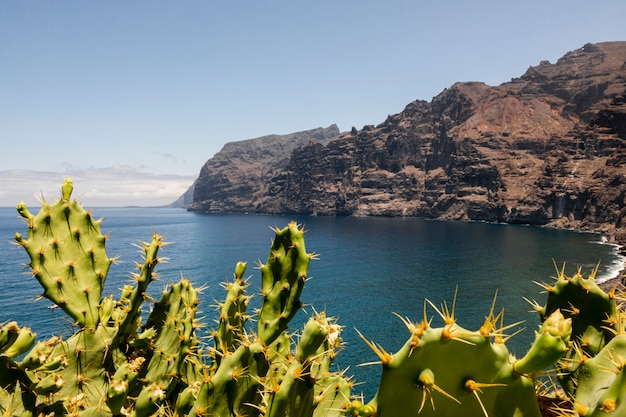
Ibiza is famous for its lively nightlife and diverse music scene, featuring performances by renowned DJs like David Guetta, and is lined with upscale holiday villas. However, I didn’t enjoy it as much as I expected. The weather in July is lovely, and it’s probably the best place in Europe for socializing if you’re into intense partying. But in my opinion, despite the charm of the walled Ibiza Town, it felt too crowded to be enjoyable. The local beaches weren’t very relaxing, and I wouldn’t go out of my way to dine at another overpriced mid-range restaurant in Sant Antoni.
Luckily, my trip to the Balearics wasn’t limited to Ibiza. I took a short ferry ride to Formentera, a small island just 30 minutes away that most visitors overlook. I was amazed by its beauty and, surprisingly, its tranquility.
Formentera, Ibiza’s smaller and prettier sister, covers only 31.75 square miles and has a population of around 12,000 people, compared to Ibiza’s 49,727. It’s a natural preserve with some of the clearest waters you’ll ever see. The island boasts some of the most beautiful swimming spots in the Mediterranean, without the crowds. Instead of all-inclusive resorts and waterparks, you’ll find casual guesthouses, boutique hotels, and unspoiled beaches.
I stayed at Hotel Roca Bela in the quaint coastal town of Els Pujols. Every room had a terrace and sea view, and my favorite feature was the air conditioner, which was essential in the Spanish summer heat. The cost was a reasonable $124 per night, though prices can vary depending on the season and demand. The minimum stay is three nights for most hotels in Formentera, so keep that in mind. I visited in early May, before the high season started, so prices were lower.
From my base in Els Pujols, I explored Formentera extensively without needing expensive day tours or taxis, as buses aren’t very frequent. How did I manage? By cycling, of course. Formentera is small enough to explore by bike, and the extensive network of cycling paths makes it easy.
Biking from the northernmost Platja de Ses Illetes, one of the most beautiful beaches with serene turquoise waters, to La Mola, the southernmost peninsula, takes only an hour. Of course, it took me longer because I frequently stopped to take pictures of the stunning sea cliffs, secluded sandy coves, and picturesque windmills. The scenery is so beautiful that you’ll soon forget about the little detours.
If you visit the nudist-friendly Platja de Llevant in the early evenings, I wouldn’t recommend bringing kids, as the regulars aren’t known for being modest. This is just one of several naturist spots along the coast. Other beautiful beaches include Ses Platgetes, Cala Saona, and Caló des Mort. Formentera is a naturist’s paradise, with abundant nature, including lakes, caves, pine woods, and vineyards, all glowing golden as the sun sets after 9 p.m.
Culturally, Formentera is one of Spain’s most staunchly Catalan islands. Locals are proud of their heritage and often mix Spanish with the local Eivissenc dialect of Catalan. This cultural pride is also reflected in the local cuisine. My favorite restaurant was Can Forn in the historic village of San Ferran de ses Roques, a 20-minute walk from Els Pujols. Catalan food is their specialty, and it’s no surprise they’ve been getting rave reviews on Tripadvisor. Their calamari ‘a la payesa’ is unforgettable.
I didn’t have time for a comprehensive gastronomic tour of Formentera, as I was only there for two nights. However, I enjoyed the seafood pasta at El Giovale, an Italian-run trattoria on the outskirts of the regional capital, and my hotel’s varied selection of paellas. San Francesc, the capital of Formentera, has several casual eateries and cafés, as well as souvenir shops and hippy bazaars where you can buy handmade Ibizan beach attire for less than on the main island.
Despite Formentera’s remoteness, food isn’t as expensive as you’d expect. The diet is mostly fish-based, with many family-owned restaurants catching their own fish. There’s also an abundance of potatoes, grain, and fruit, so few items are imported from the mainland. Unless you’re keen on trying the local sushi buffet, vegan-friendly upscale diner, or the nearby Indian restaurant, you’ll likely spend $25-27 on a meal, including a small portion of calamari, a main dish, and a glass of local wine. I recommend trying the Cap de Barbaria red, Formentera’s most famous wine.
In total, I spent about $450-500 for a three-night stay in Formentera, including the ferry from Ibiza and back, accommodation, food, and transportation costs (which were minimal as I mostly biked or walked short distances). Formentera is the perfect destination if you need a break from the chaos of Ibiza, whether for a day trip or a long weekend of relaxation, cycling, beaching, and food-sampling.
To get to Formentera, you’ll need to take a ferry from the main Port of Ibiza, as Formentera doesn’t have its own airport. Two companies, Balearia and Trasmpai, operate on this route, and the crossing takes only 35 minutes. One-way tickets are around $19, and I recommend heading to the upper deck for a breathtaking view of the medieval, whitewashed Ibiza Town as the ferry heads out to sea.